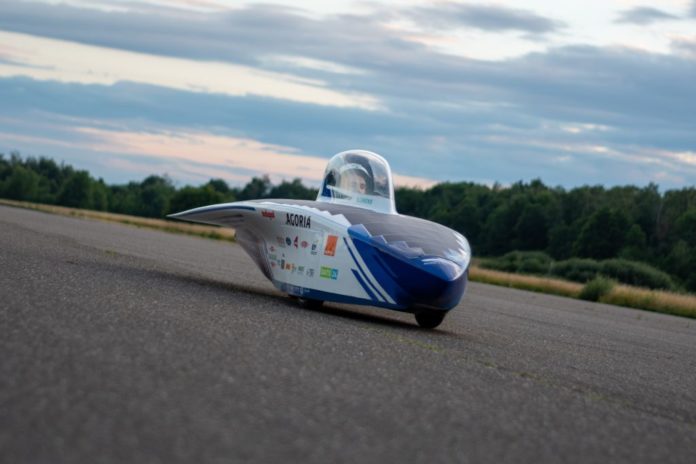Solar car racing refers to competitive races of electric vehicles which are powered by solar energy obtained from solar panels on the surface of the car (solar cars). Historically, these challenges are often performed by universities to develop their students’ engineering and technological skills. The more competitions there are, the more engineering students explore advanced manufacturing processes to create the most performing race cars, the ultimate goal being to find greener ways of racing.
In this vein, for the Solar Challenge Morocco, a brand-new solar race across the Moroccan Sahara set to take place from October 23rd to October 30th, the Agoria Solar Team — a crew of 20 engineering students from the KU Leuven University—decided to push the envelope further and take their car to the edge of engineering.
Engineering student teams across the world will compete in a 2,500-kilometer drive along the foothills of the Atlas Mountains and this is exactly what inspired the name of the Belgian new solar car: the BluePoint Atlas.
With only three wheels, the BluePoint Atlas features a unique bullet shape which is meant to ensure minimal air resistance during driving, ultimately leading to reduced energy consumption of the solar car. At the heart of this machine, there is an electric motor that delivers an efficiency of 98%.
However, what raises the most our interest in this development, is the production of two main car parts: the battery case and the steering handle. According to Bart Depredomme, “the battery case needs to allow airflow, and this means it has a complex design. The steering handle also needs to be made from a flexible material that allows it to be ergonomic. Materialise has helped us develop ideas on how to improve the designs and make our car durable and trustworthy.”
As a matter of fact, the team used Materialise’s software for build and data preparation, Magics. “The software makes everything easier and faster. With it, we could make sure that all parts were printable and with high-quality capabilities, avoiding costly build failures,” describes the Agoria Solar team member.
Materialise, their technology partner explains that when you’re competing in a two-thousand-kilometers endurance race, anything is possible, and the slightest driving or even engineering mistake can put everything at risk. So, making sure that you have reliable suppliers is fundamental when driving for five days in the middle of the Sahara Desert.
We now can’t wait to see the BluePoint Atlas’ performance on the ground.
Remember, you can post job opportunities in the AM Industry on 3D ADEPT Media free of charge or look for a job via our job board. Make sure to follow us on our social networks and subscribe to our weekly newsletter : Facebook, Twitter, LinkedIn & Instagram ! If you want to be featured in the next issue of our digital magazine or if you hear a story that needs to be heard, make sure you send it to contact@3dadept.com






